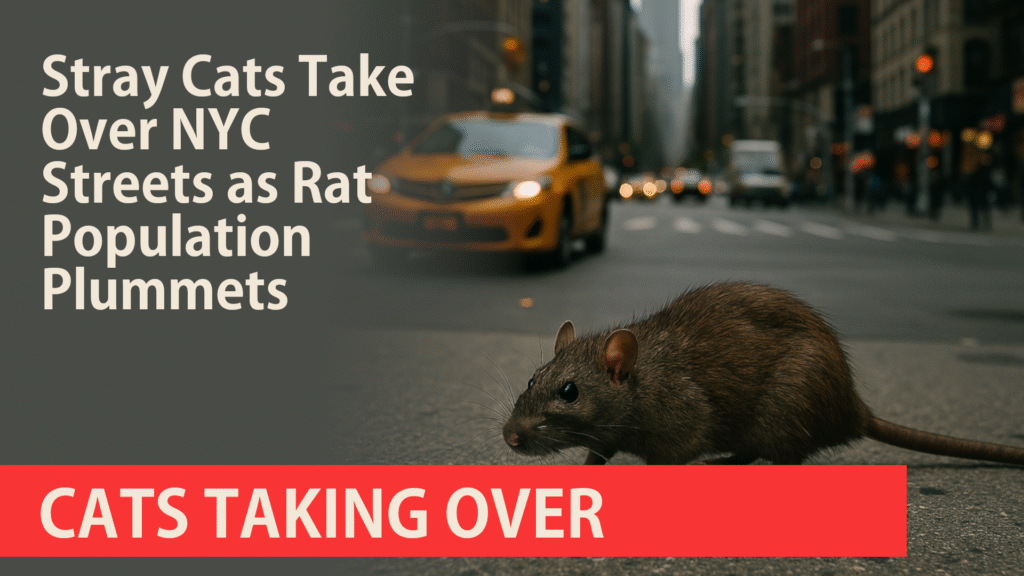
In a twist of urban evolution, New York City’s sidewalks, alleys, and rooftops are no longer dominated by the scurrying feet of rats—but by the soft padding of stray cats.
Once plagued by an overwhelming rat infestation, New York is now witnessing a striking reversal: the rise of a thriving stray cat population. Residents from Harlem to Brooklyn have reported a sharp decline in rat sightings over the past year, a development many attribute to the surging number of feral felines.
“It used to be that you couldn’t step outside at night without seeing several rats running past,” said Rosa Martinez, a lifelong resident of the Lower East Side. “Now? It’s cats. Cats on stoops, on fences, in the parks. And people love them.”
Experts say the shift is no coincidence. With abundant prey and a largely hands-off approach from city officials, feral cats have found both food and fans. While city pest control struggled for decades to curb the rat population, nature seems to be taking a more efficient—and unexpected—course.
Human Help, Feline Flourish
Unlike rats, cats are benefitting from human intervention. Many New Yorkers, sympathetic to the feline hunters, have taken to feeding them, often leaving out cans of tuna, kibble, and bowls of water. Some have even named their neighborhood cats, forming informal communities of caretakers.
“It’s not uncommon to see someone crouched down on a street corner petting a stray,” said Dr. Eleanor Chang, a veterinarian with the NYC Animal Health Board. “These cats are becoming semi-domesticated in some areas. They’re not just tolerated—they’re adored.”
Chang warns, however, that while the current trend seems beneficial, it may come with long-term consequences. “We’re watching an unregulated boom. At some point, without intervention like spaying or neutering, this could create a different kind of crisis.”
No City Plan—Yet
For now, City Hall has no immediate plans to control the cat population. A spokesperson from the Department of Sanitation noted that the rodent complaints are “the lowest they’ve been in nearly two decades,” and that officials are “monitoring the evolving urban ecosystem closely.”
Environmental scientists and urban ecologists are fascinated by the development. Dr. Malik Johar, an urban wildlife researcher at Columbia University, sees the situation as “a living case study in predator-prey balance.”
“The cats have done what humans couldn’t: control the rats. But nature doesn’t stop evolving. There’s always another chapter.”
Until then, New Yorkers are enjoying their unexpected feline neighbors, many of whom have become minor celebrities in their blocks.
“They’re part of the city now,” said Martinez, gently tossing a scrap of chicken to a fluffy gray tomcat outside her bodega. “And honestly? I prefer them to rats.”